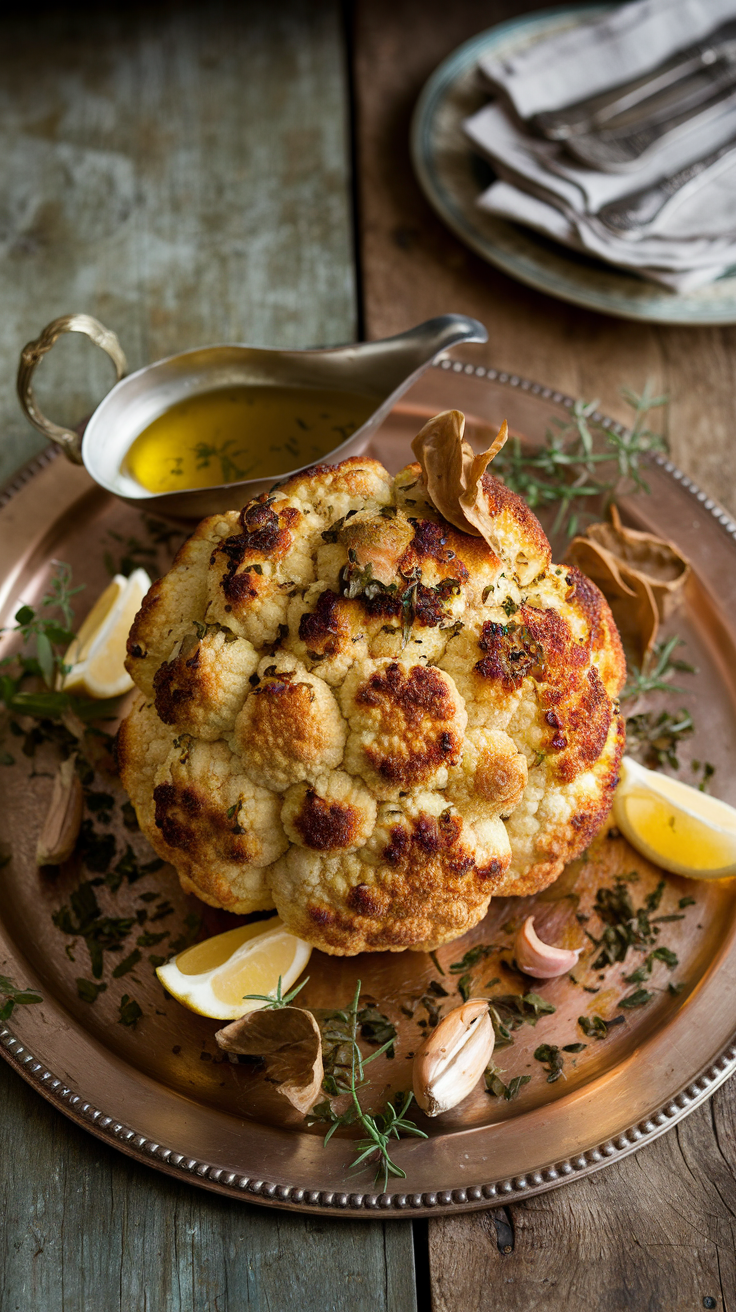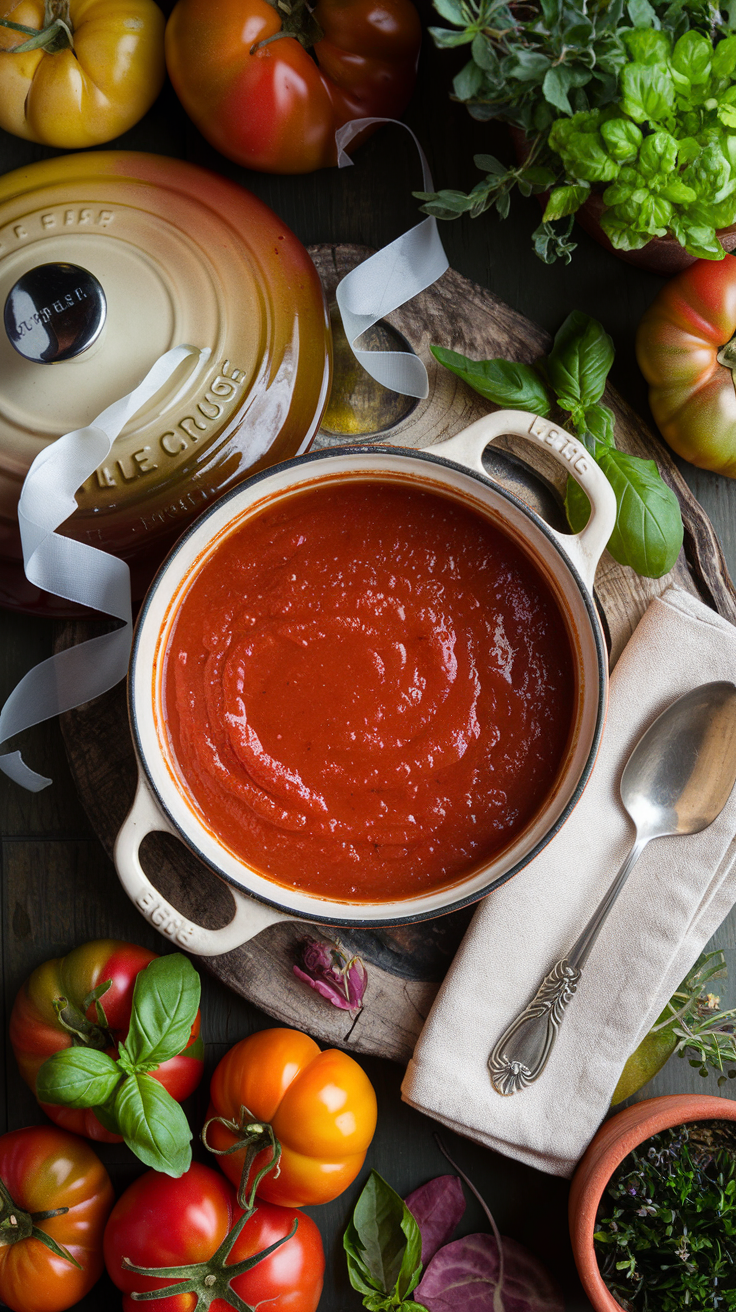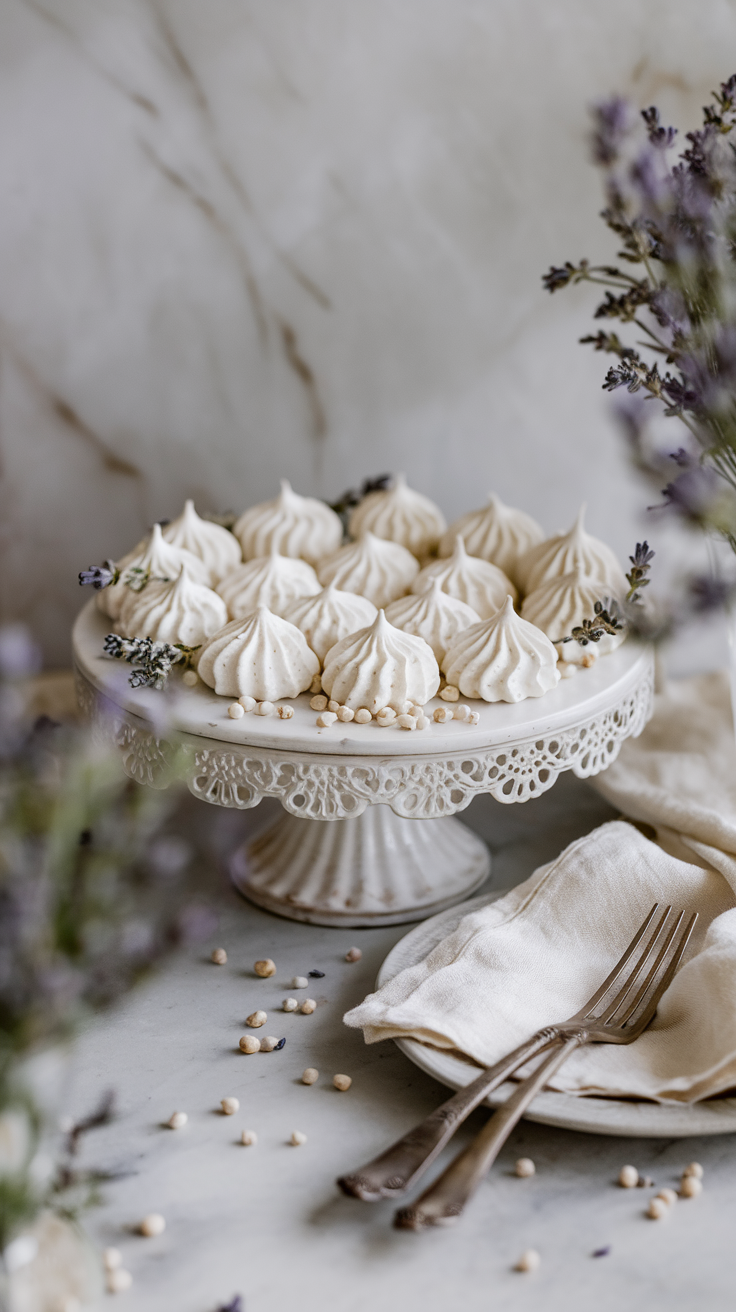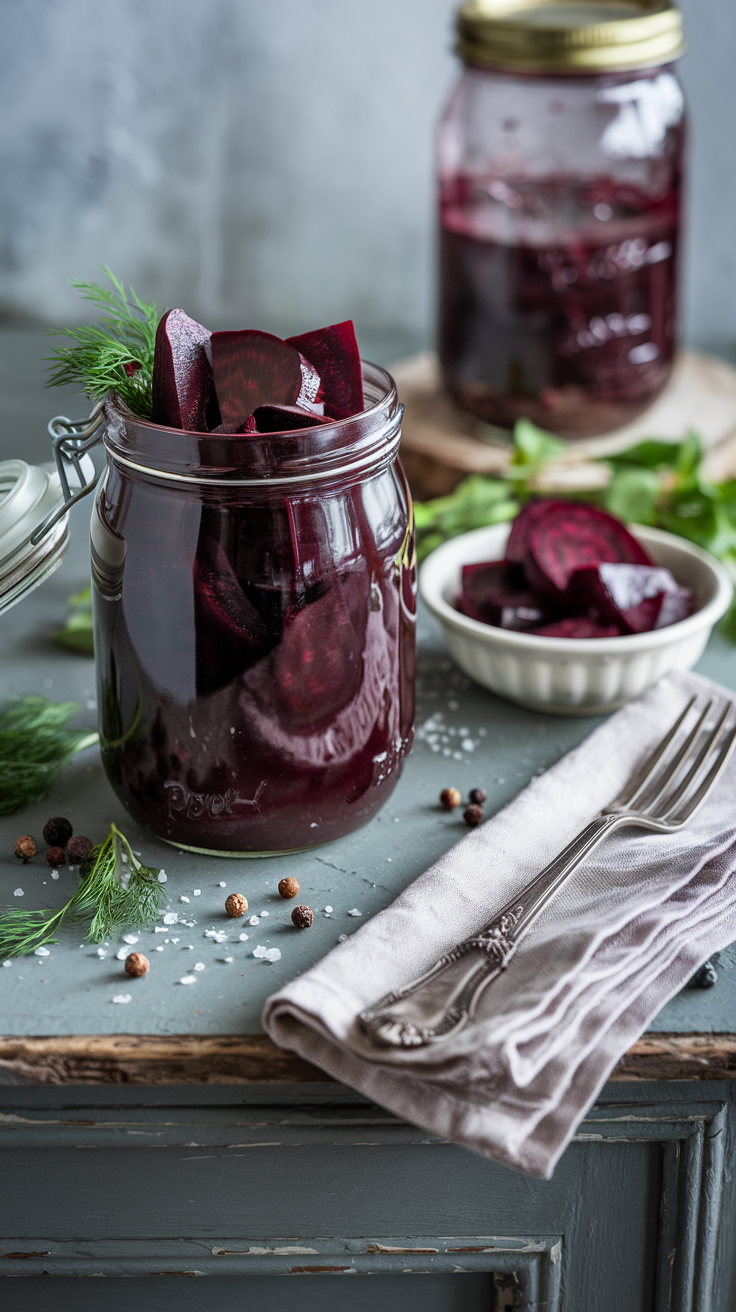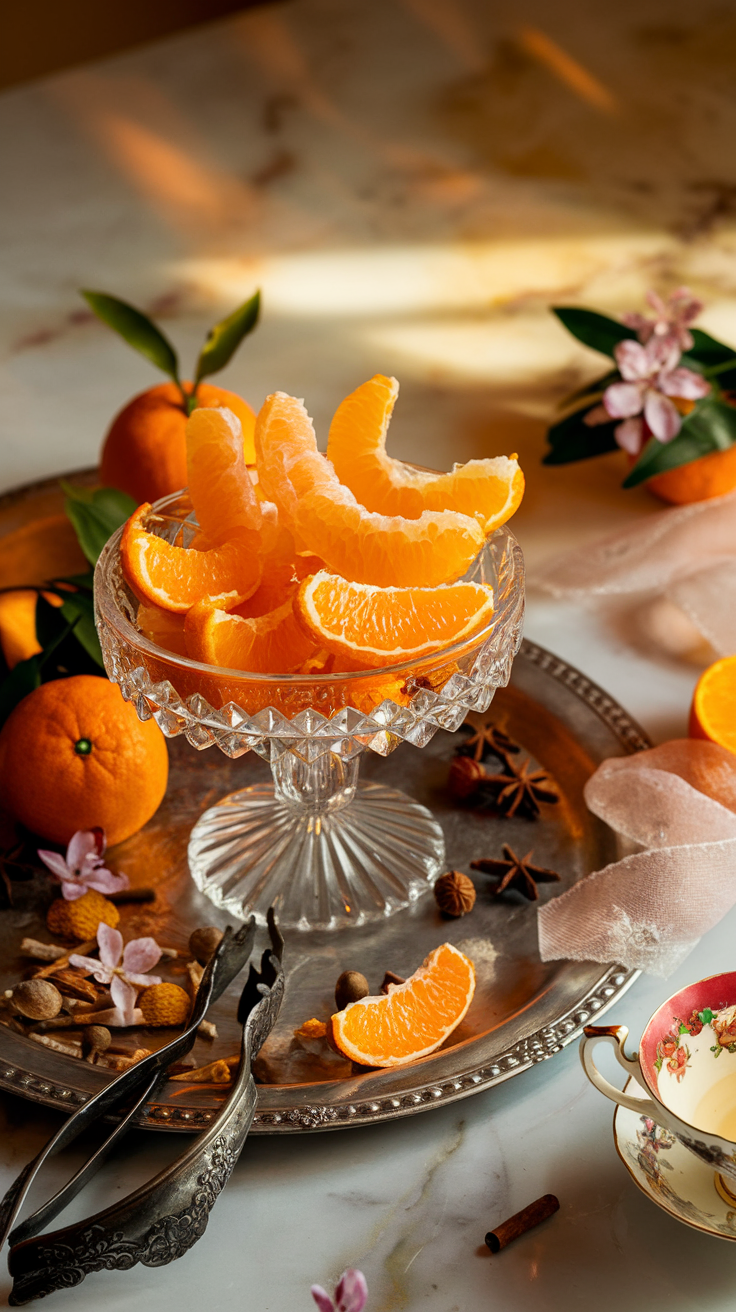Whole Roasted Cauliflower
When we talk about zero waste cooking, few dishes embody the principle better than a whole roasted cauliflower. This showstopper transforms the humble brassica into a centerpiece-worthy dish while ensuring not a single part goes unused. From the tender core to the often-discarded leaves, every element plays a role in creating a memorable meal.
In restaurant kitchens, I learned that the most impressive dishes often come from simple ingredients treated with respect. This recipe elevates the entire cauliflower to its highest potential – the florets become nutty and caramelized, the stem turns buttery-tender, and the leaves create a crispy garnish that most diners mistake for expensive specialty vegetables.
Why You’ll Love This Recipe
- True Zero Waste: Uses every part of the cauliflower
- Impressive Presentation: Perfect for dinner parties
- Minimal Prep: Most work is done by the oven
- Versatile: Can be seasoned countless ways
- Cost-Effective: Transforms an affordable vegetable into a luxury dish
Expert Tips
- Choose heavy, tight-headed cauliflower with fresh leaves
- Keep core intact for even cooking
- Start with high heat for caramelization
- Reserve any trimmed leaves for crisping
- Save cooking juices for future sauces
Key Ingredients
Whole Cauliflower: Select organic when possible, looking for bright leaves and no brown spots Olive Oil: High-quality for best flavor, buy in bulk to reduce packaging Fresh Herbs: Use stems and leaves, can be from garden Garlic: Whole head, papers reserved for stock Seasonings: Purchase from bulk section, customize to taste
How to Make Perfect Whole Roasted Cauliflower
Step 1: Prepare the Cauliflower
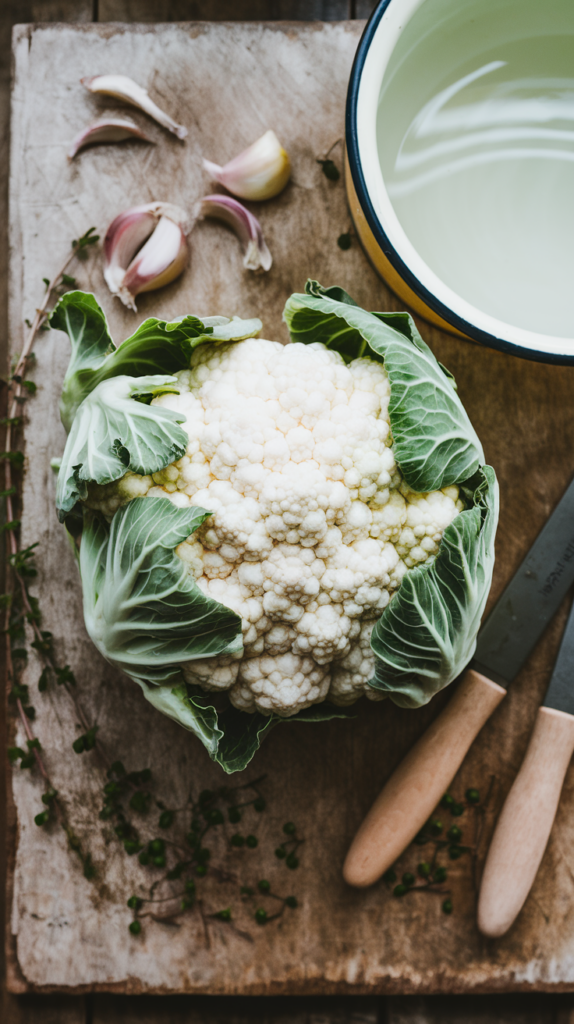
Begin with a thorough examination of your cauliflower, appreciating its natural architecture. Remove any tough outer leaves, setting them aside for later use – these will become crispy garnishes. Give the cauliflower a gentle bath in cold water, allowing any hidden inhabitants to escape. Pat completely dry with a clean kitchen towel, as excess moisture will inhibit caramelization.
The core requires careful attention – trim only the very bottom while keeping the head intact. This base will serve as a natural platform for roasting and ensure even cooking throughout. If the stem seems particularly woody, use a paring knife to remove only the tough outer layer, preserving the tender interior that will become buttery-soft during cooking.
Study your cauliflower’s structure to inform your seasoning approach. Those tight florets will trap flavors, while the smooth sides will need more attention to achieve even coverage. Any small florets that fall away during preparation should be collected – they’ll become chef’s treats, roasting into especially crispy morsels that you can snack on or use as garnish.
Step 2: Season and Prepare for Roasting
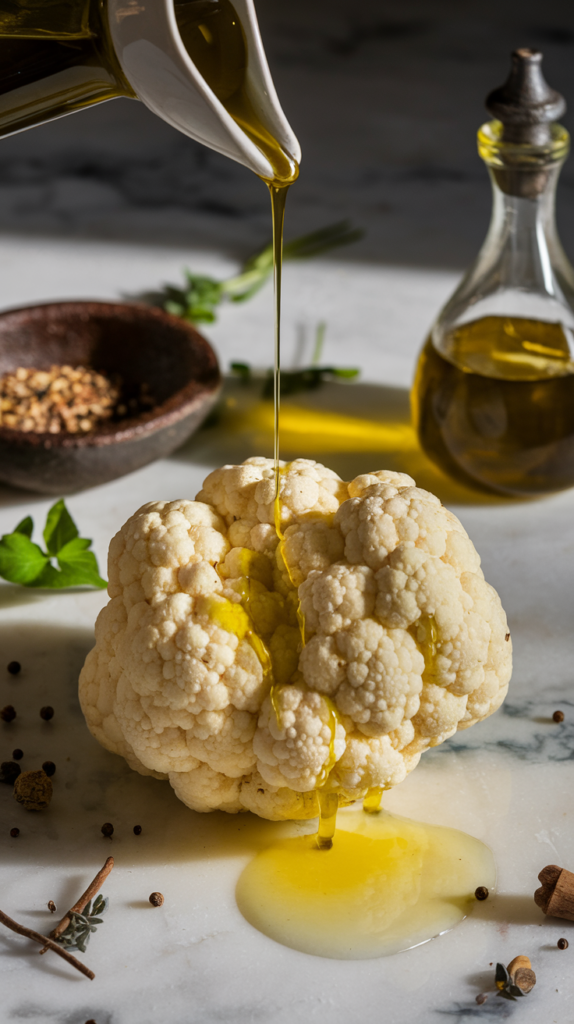
Seasoning a whole cauliflower requires a methodical approach that considers both surface and depth. Begin with a generous olive oil massage, using your hands to ensure every crevice is reached. This initial layer creates the foundation for a golden crust and helps additional seasonings adhere. Work from top to bottom, occasionally tilting the cauliflower to let oil penetrate between the florets.
The spice mixture should be applied in layers – first a rain of fine sea salt that can penetrate deeply, followed by your chosen spice blend. Traditional combinations like za’atar or herbes de Provence work beautifully, but even simple salt and pepper create magic when applied thoughtfully. Pay special attention to the spaces between florets, where seasonings can collect and create pockets of flavor.
For optimal absorption of flavors, let your seasoned cauliflower rest at room temperature while the oven preheats. This rest period allows the salt to draw out some moisture, which will then combine with the oil and seasonings to create a natural brine. Position any reserved leaves on your baking sheet – they’ll roast alongside the main attraction, creating different textures and flavors from the same vegetable.
Step 3: The Initial Roast
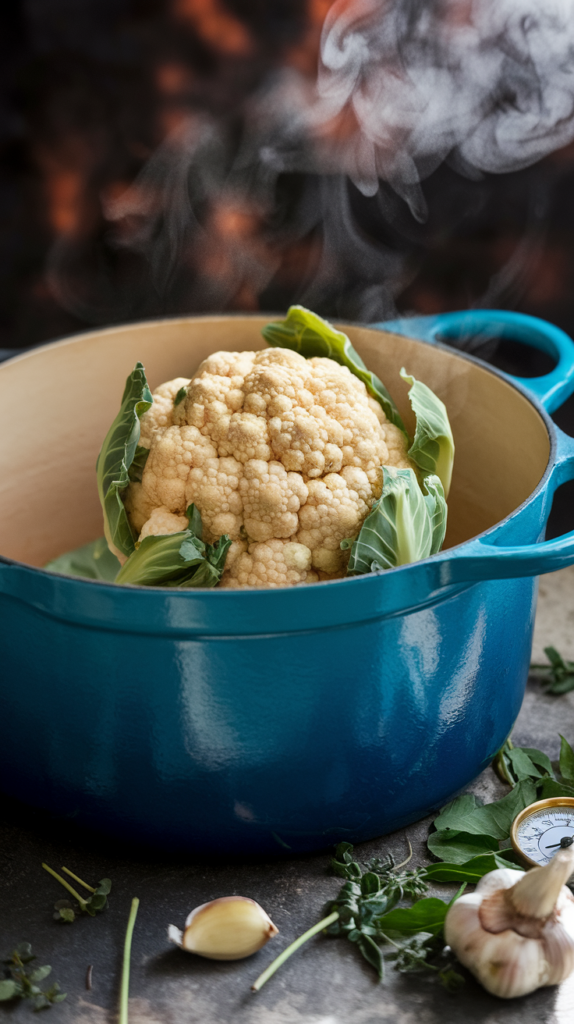
The initial blast of high heat is crucial for developing the caramelized exterior that makes this dish memorable. Position your rack in the lower third of the oven – this allows heat to circulate fully around the cauliflower while providing enough headspace for steam to escape. The sound of sizzling should begin almost immediately; this is the signal that your temperature is correct.
Watch for color development during this phase – you’re looking for a deep golden brown on the exposed surfaces, which typically takes about 20-30 minutes. Any leaves roasting alongside will begin to crisp and curl, transforming into nature’s chips. The aroma will shift from vegetal to nutty, a key indicator that the Maillard reaction is working its magic.
During this phase, resist the urge to open the oven door frequently. Each peek releases precious heat and steam. If you’ve arranged any separated florets around the main head, they may need to be removed earlier to prevent burning. These perfectly crispy pieces can be set aside for garnish or chef’s snacking privileges.
Step 4: The Gentle Finish
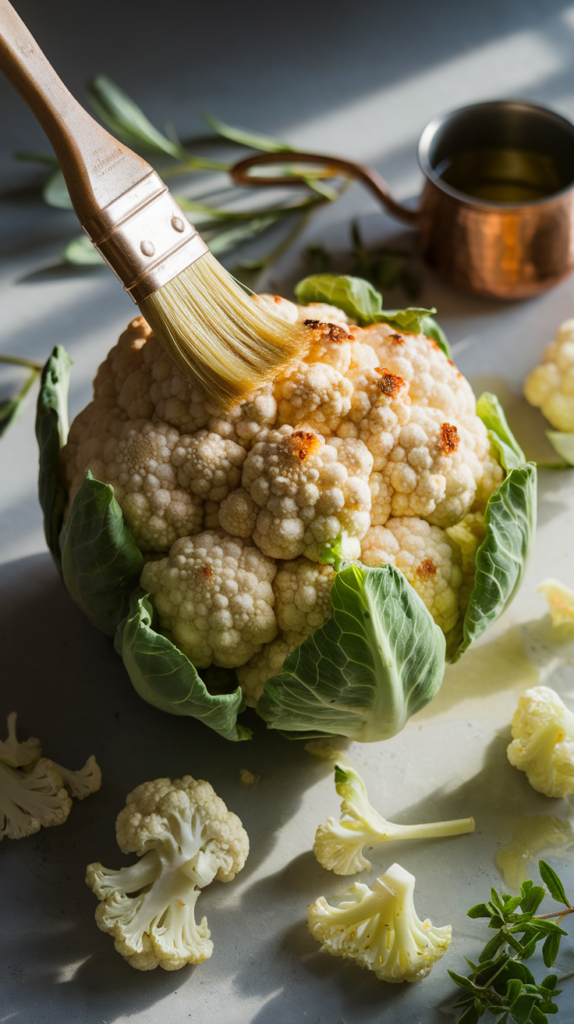
After the initial browning, reduce the heat to allow the cauliflower’s interior to cook through without burning. This gentler heat develops the tender, almost creamy interior that contrasts beautifully with the crisp exterior. Test doneness by inserting a knife into the core – it should meet only slight resistance, similar to a baked potato.
The final basting is crucial for both flavor and presentation. Use the accumulated pan juices, enriched with any herb-infused oil you’ve prepared, to glaze the surface. This creates a beautiful sheen and adds an extra layer of flavor. The hot cauliflower will immediately absorb these last-minute additions, creating an almost lacquered finish.
Let your masterpiece rest for 10-15 minutes before serving, during which time you can arrange the crispy leaves and any garnishes. This rest period allows the internal temperature to stabilize and makes for easier cutting. Consider presenting it whole at the table for maximum impact before portioning.
Whole Roasted Cauliflower
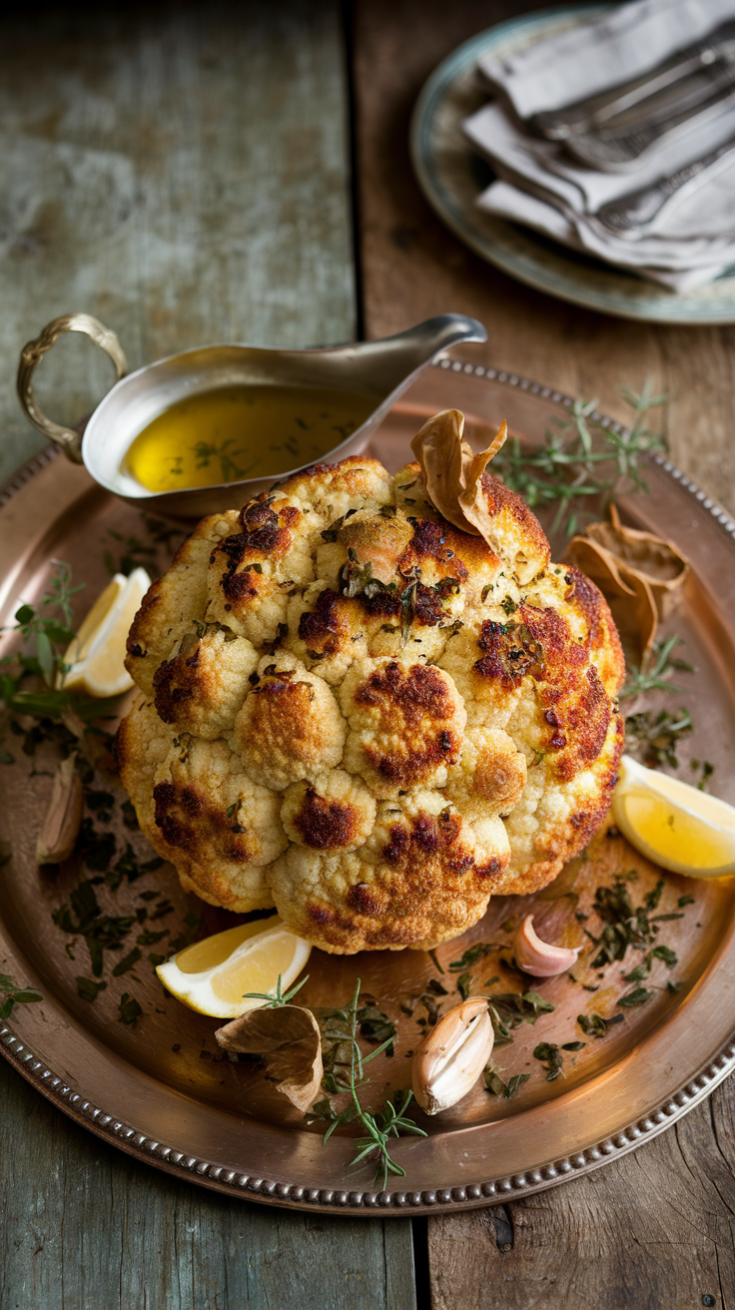
A zero-waste celebration of the entire cauliflower, transformed into an impressive main dish with crispy leaves and tender core.
Ingredients
- 1 whole cauliflower (2-3 lbs), leaves intact
- 4 tablespoons olive oil
- 1 whole head garlic
- 2 tablespoons mixed fresh herbs
- 2 teaspoons sea salt
- 1 teaspoon freshly ground black pepper
- 1 lemon, zested and juiced
- Optional: 2 tablespoons za'atar or favorite spice blend
Instructions
- Prepare Cauliflower (20 minutes):
Clean whole cauliflower
Trim outer leaves and reserve
Create level base on stem
Pat completely dry - Season (15 minutes):
Rub with olive oil
Season thoroughly
Prepare garlic and herbs
Arrange leaves - Initial Roast (30 minutes):
Preheat to 425°F/220°C
Roast until golden
Monitor leaf chips
Check browning - Finish Cooking (45 minutes):
Reduce heat to 350°F/175°C
Baste occasionally
Test core for doneness
Rest before serving
